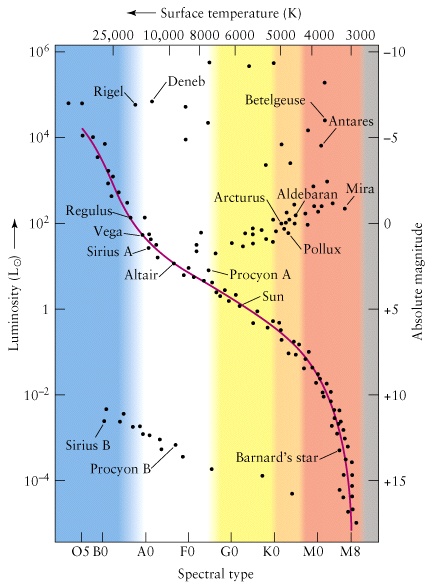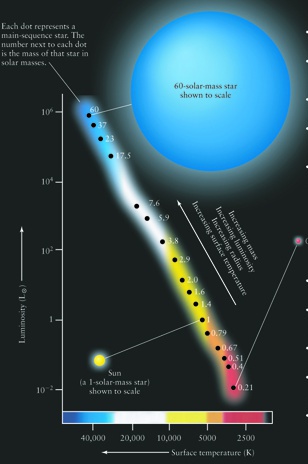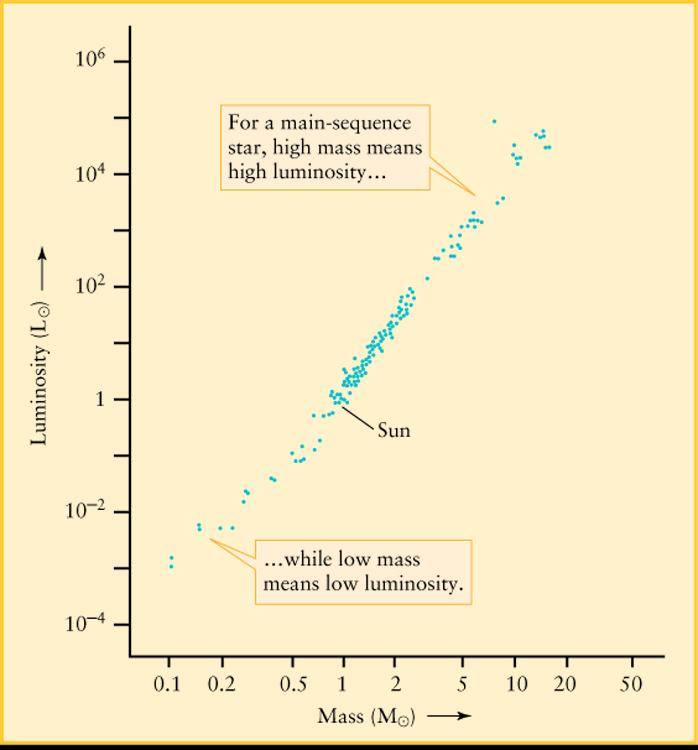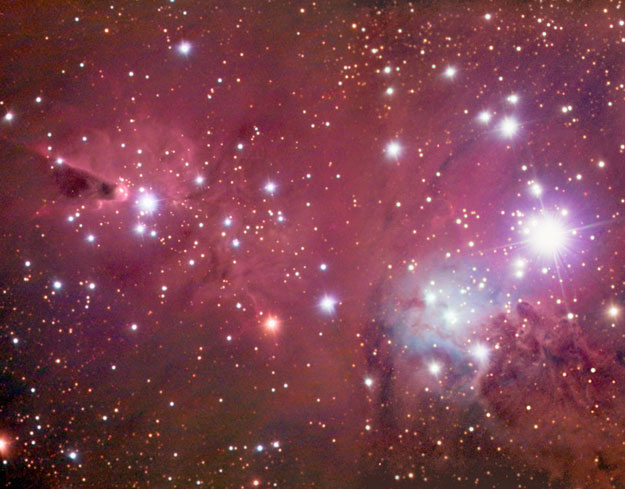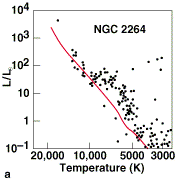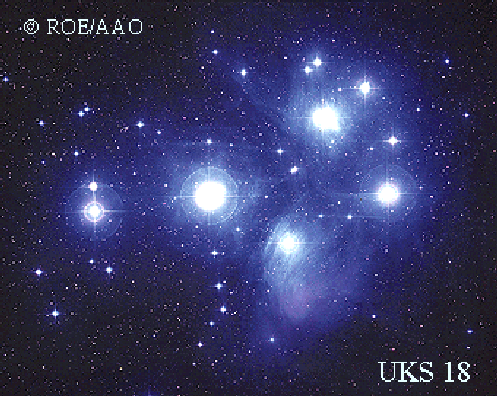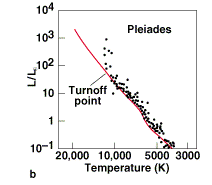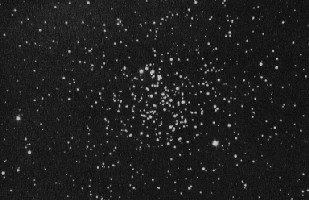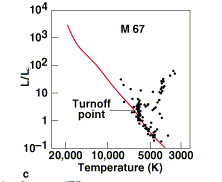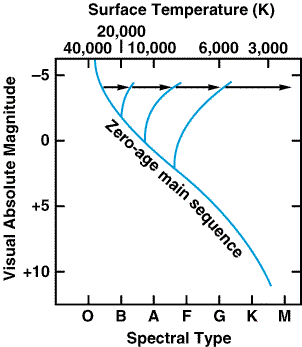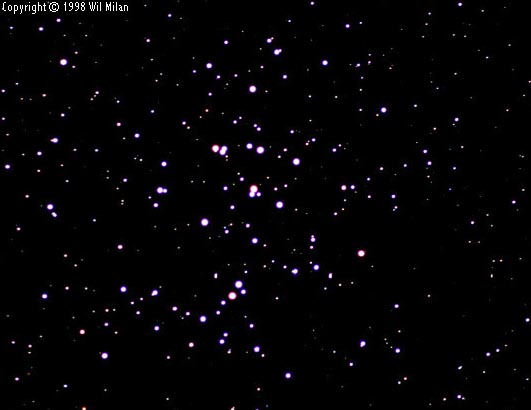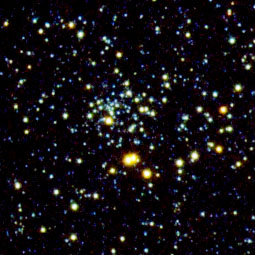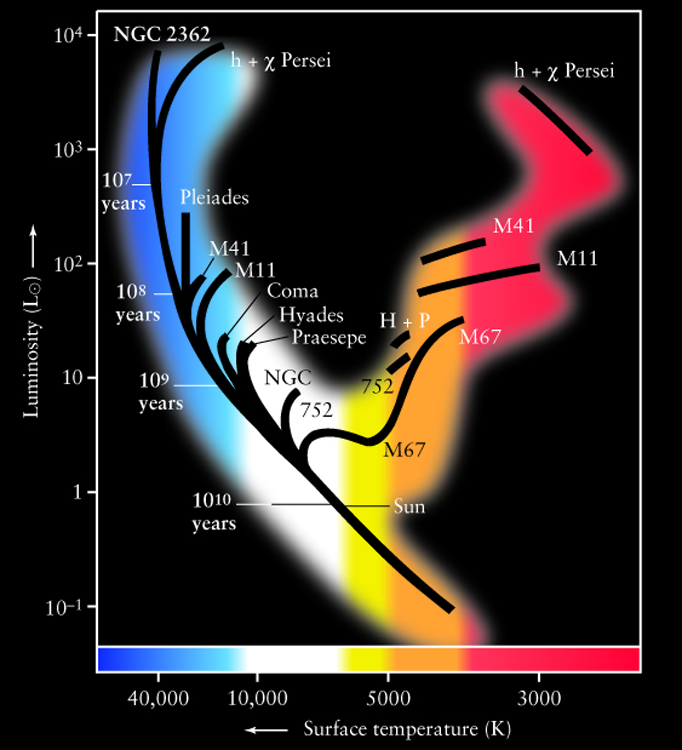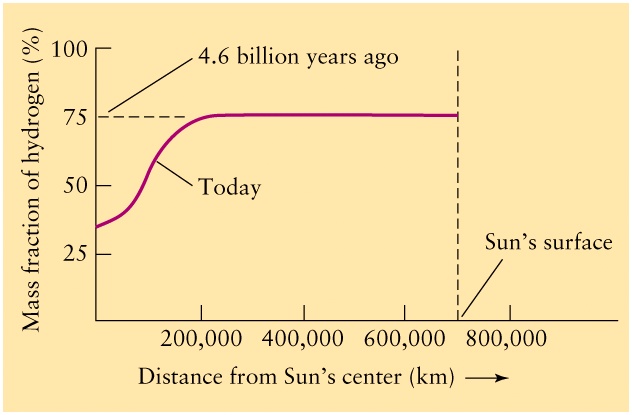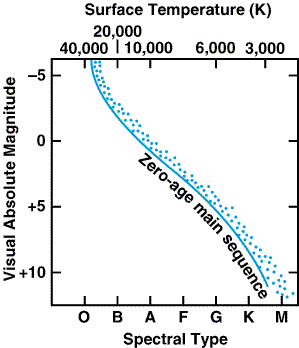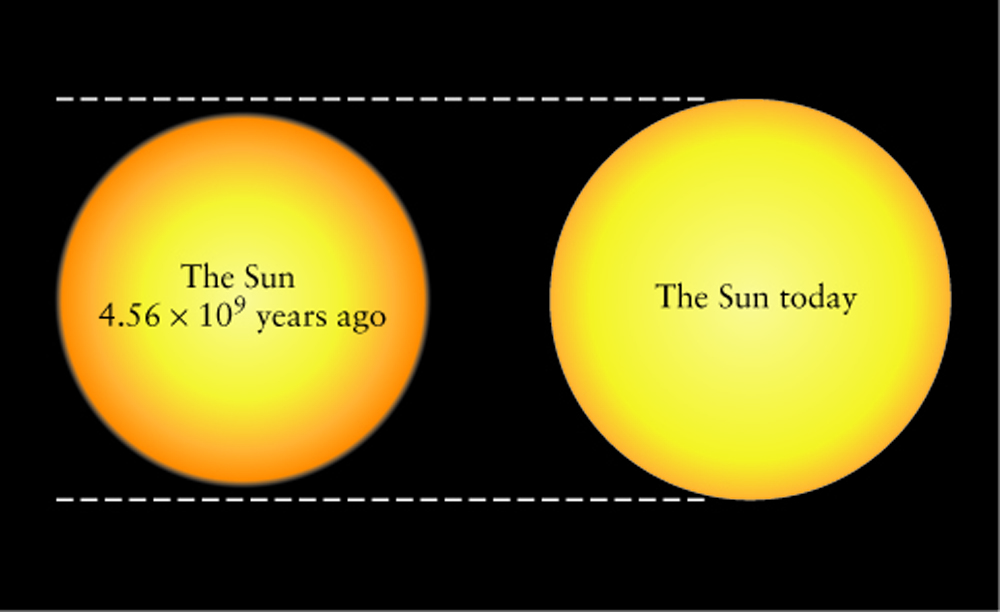Birth of Main sequence
- The Composition of the interstellar medium is fairly uniform in composition about 73% H, 25% He.
- The stars which form out of the interstellar gas clouds should also have fairly uniform composition.
- Since H is most common element in the young star, the most likely reaction which could power the star is the nuclear fusion reaction 4 H -> 4He.
- The only feature which changes from the formation of one star to another is the mass of the collapsing cloud.
- This suggests that main sequence stars are formed from clouds that differ primarlily in mass
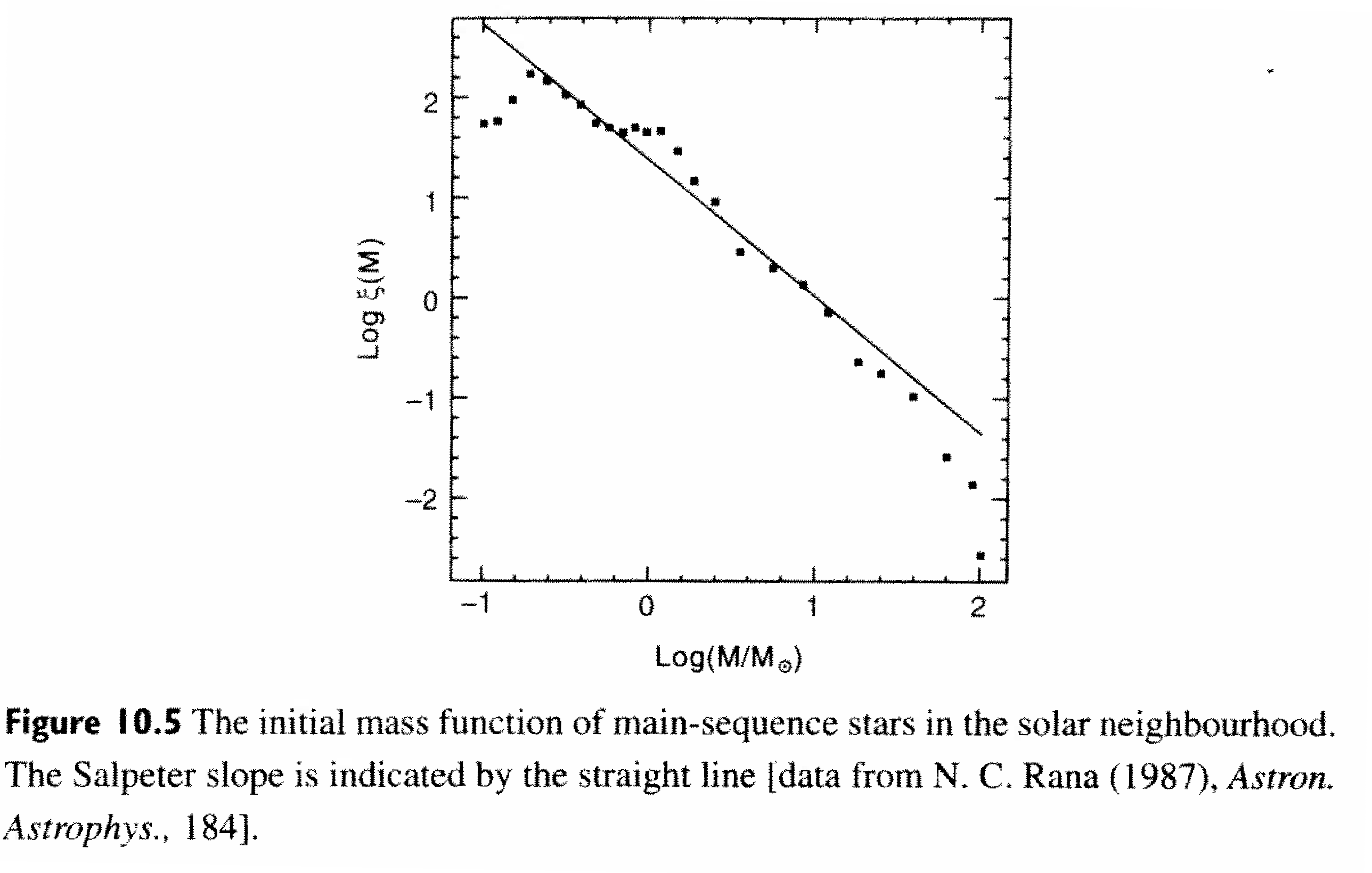
M &xi(M) =
number of stars in each decade of masses
Salpeter Law: &xi(M) ~ (M/MSun)-1.35
